Information about nPro version 2.0
After nearly a year of development, the new version of the nPro software is now live! You find all details about the new tool version on this page.
The most important in brief
- As soon as the new nPro version goes online, you will reach it at https://app.npro.energy and the corresponding academic version at https://acad.npro.energy.
- Your projects from the old nPro version have been transferred to the new version to the best of our ability. However, since the model parameters of the old version could not always be transferred 1:1 to the parameters of the new version, there may be deviations in the calculation results. Therefore, we kindly request you to review your input parameters when opening old projects.
- If you want to precisely reproduce old calculation results, you can still use the old nPro version.
The key highlights
- New software structure: You can create three different project types: District, single building and energy hub.

- Scenario comparison: You can create and directly compare as many scenarios as you want for a project.
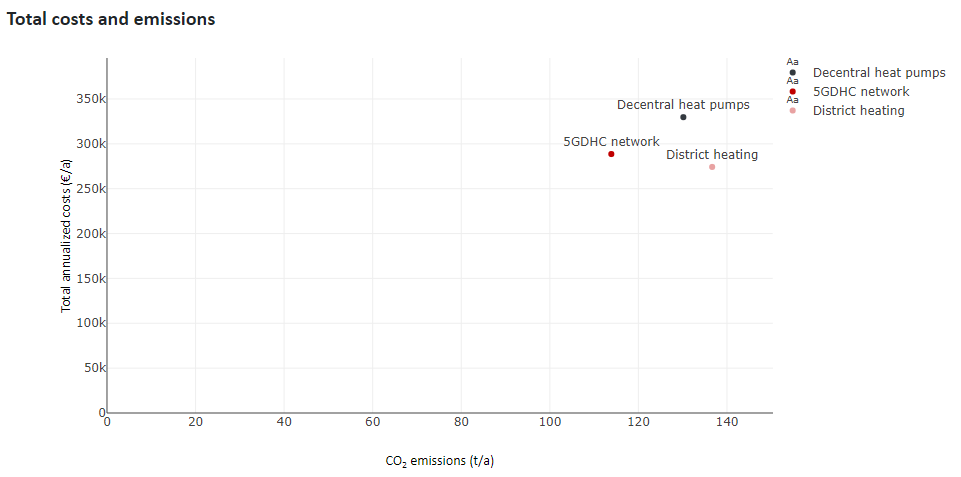
- New technology structure: The new structure allows for the representation of more energy systems and configurations.
- You can calculate various district heating network types: Conventional district heating, low-ex heat networks with decentralized domestic hot water heating, cold district heating (5GDHC networks), and all hybrid solutions. Alternative solutions with decentralized air- or ground-source heat pumps can also be simulated.
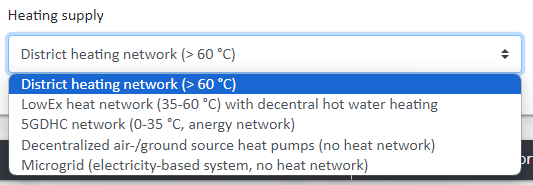
- Many new visualizations have been integrated to facilitate result analysis and utilization.
- New technologies: PVT collectors and ice storage
All details on the new features
General
- Comprehensive economic evaluation for district energy solutions
- Integrated scenario comparison: Ability to create different scenarios of a project
- Calculation of single buildings (without district heating network)

- Function to view and modify previously uploaded time series
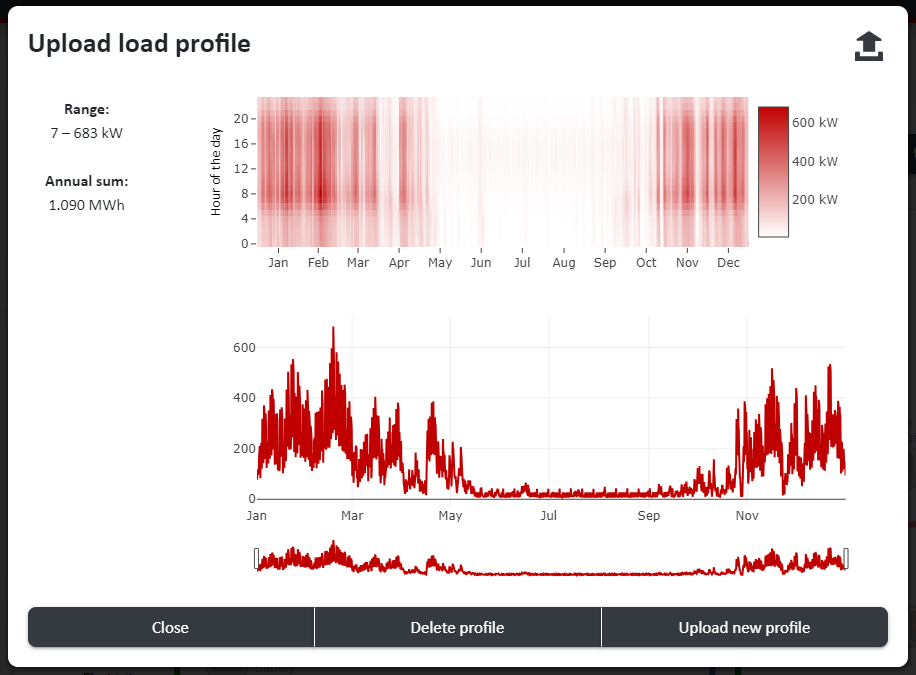
- Automatic saving of projects
- Customization of weather profiles
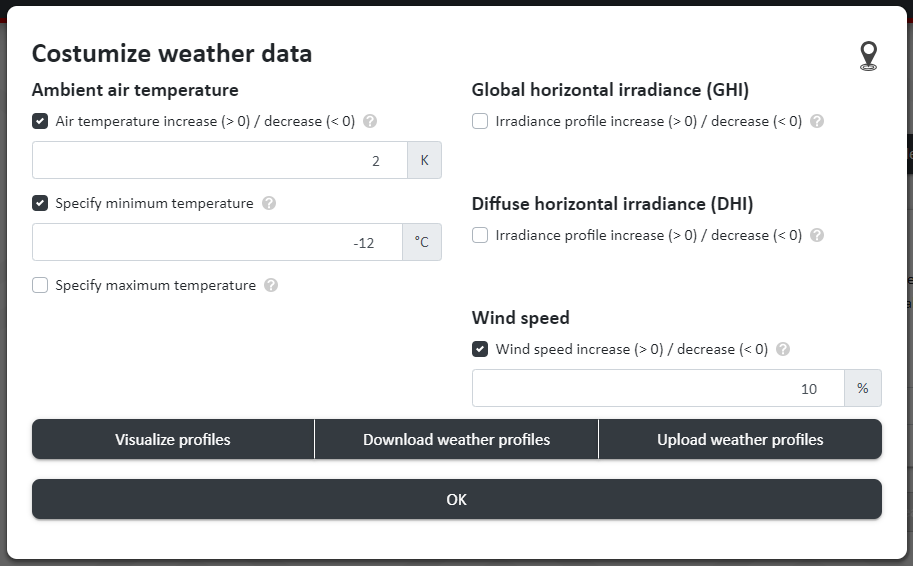
- Importing an epw file (EnergyPlus file format) for custom locations. This allows weather data for thousands of locations worldwide to be used directly in nPro.
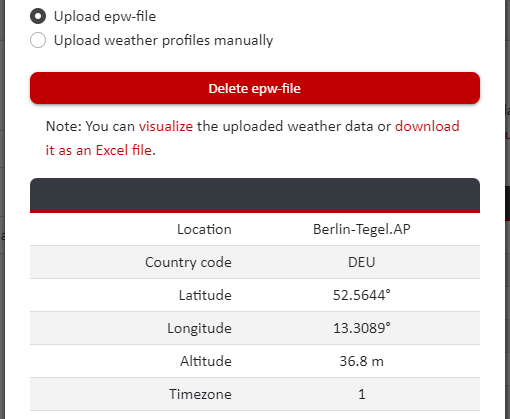
- Improved upload functionality: Uploading daily profiles (24 values); uploading annual profiles with 5- and 10-minute resolution.
- Setting the corporate design of the company to display the charts with corporate colors and to directly use them in presentations and reports.
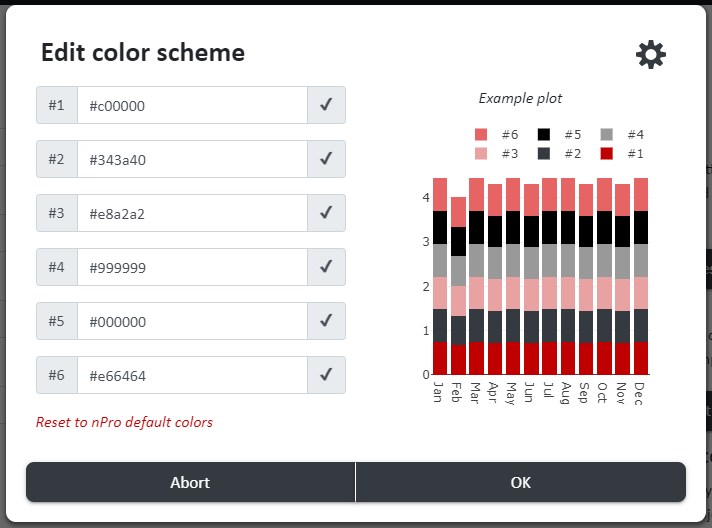
- Sharing projects with other users as read-only
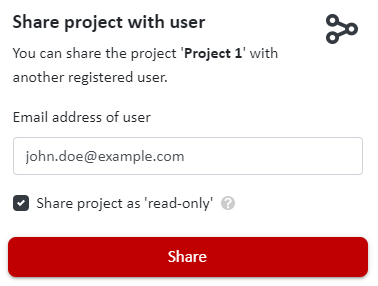
District heating networks
- Detailed loss calculation for district heating networks according to DIN EN 13941 (definition of pipe segments)

- Incorporation of manufacturer data for district heating pipes from ISOPLUS
- Quantification of heat gains in cold district heating networks (5GDHC networks)
- Definition of sliding supply and return temperatures for district heating networks
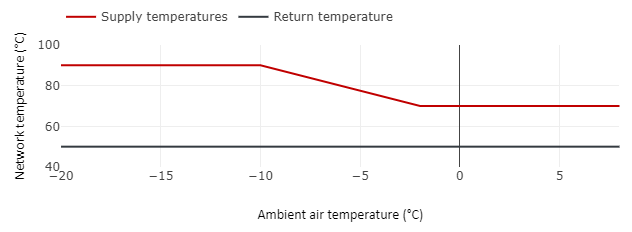
- Uploading custom profiles for supply and return temperatures for district heating networks
- Integration of low-Ex district heating networks with decentralized hot water heating
- Estimation of piping lengths for a neighborhood
- Calculation of ground temperatures
- Cost calculation for district heating networks
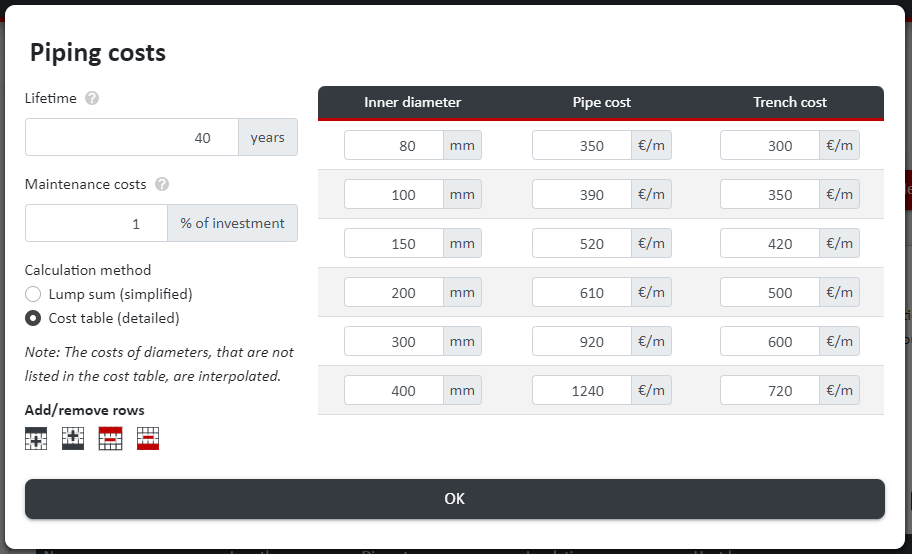
Generation of load profiles
- Aggregation of identical buildings into building groups: Multiple identical buildings can be added as a group to a district.
- Default values for supply temperatures for each building type
- Definition of supply and return temperatures for heating and cooling demands (building-specific)
- Supply temperatures can be freely defined for space heating and uploaded as annual profiles
- Heat recovery to reduce ventilation heat losses
- E-mobility profiles: Demand input based on installed charging power and simultaneity factor; or based on annual demand
- Demand input for user electricity and process cooling based on area-specific maximum load (W/m²)
- Function to duplicate buildings
- Consideration of decentralized electric domestic hot water heating using instantaneous water heaters or under-sink devices
- Combination of decentralized electric domestic hot water heating and partial preheating by (central) building heat pump
- Improved import of default values for demand data through a notification window
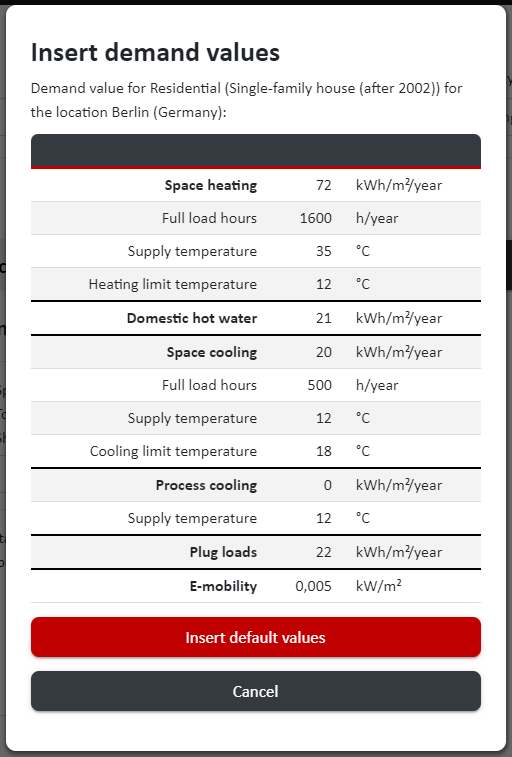
Heat pumps
- Simulation of decentralized air-source heat pumps or ground-source heat pumps instead of central supply through a district heating network
- Integration of a heat pump database (hplib library)
- Specification of the rated COP for improved result output in kW-thermal
- Definition of custom COP data sheets depending on source and sink temperatures

- Simplified selection of an appropriate exergy efficiency in the COP calculation using the Carnot formula
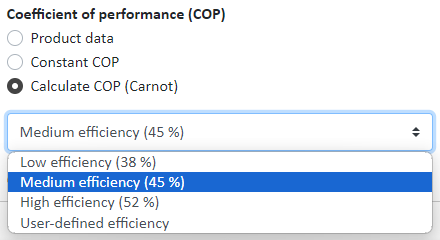
Energy hub (design optimization)
- Introduction of multiple optimization objectives: Total costs, CO2 emissions, electricity consumption, or multi-objective optimization (costs vs. CO2)
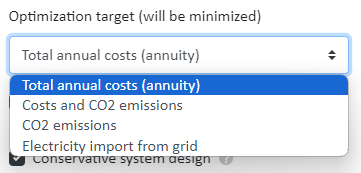
- Bar charts with monthly values for energy consumption, generation, electricity, heat and cooling
- Visualization of multiple annual profiles in a single chart
- Custom charts with annual profiles
- Energy flow diagrams for annual totals, seasons and months
- Operational constraints based on outdoor air temperature, energy demands or custom annual profiles

- Incorporation of fixed investment costs associated with the installation of a technology.

Technologies in the energy hub
- Heat dissipation in CHP units: Option for heat dissipation. A CHP can also be used as an electric generator (without heat generation).
- Heat source: Consideration of an energy purchase price for heat sources.
- Dynamic naming of technologies based on fuel: "Gas Boiler" instead of "Boiler 1"
- Inclusion of annual price increase rates for electricity costs, gas costs, etc.
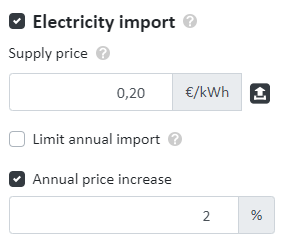
- Representation of the energy flow structure can be displayed with or without deactivated technologies.
- Booster heat pump between low-temperature and high-temperature heat demand
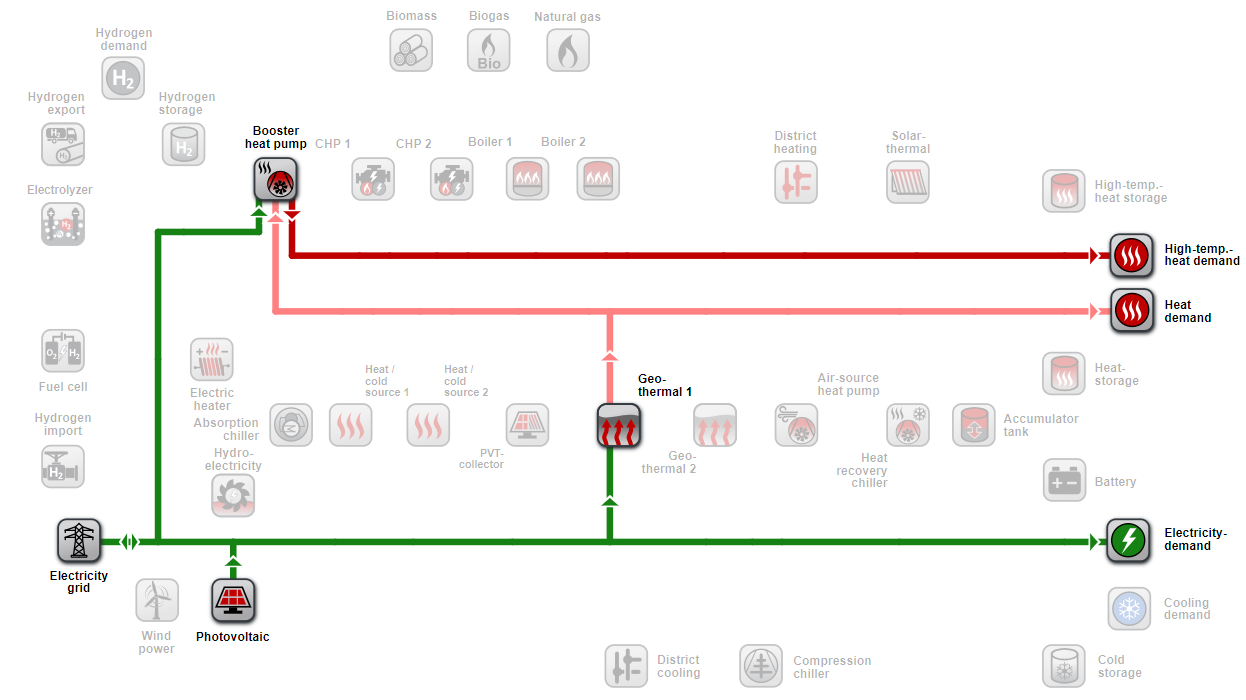
Energy hub: Geothermal energy
- Geothermal: Differentiation of the usage type: Geothermal probes, horizontal geothermal collectors, deep geothermal, or ice storage
- Full-load hours for geothermal probes can be restricted (e.g. 2200 hrs/year)

- Regeneration of the geothermal field can be considered (complete or partial)
- Regeneration methods for geothermal fields can include ambient air, heat sources, PVT collectors, or other heat generators.
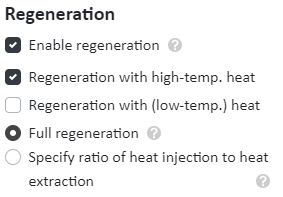
Energy hub: Photovoltaics, solar thermal and PVT
- Integration of PVT collectors as a new technology
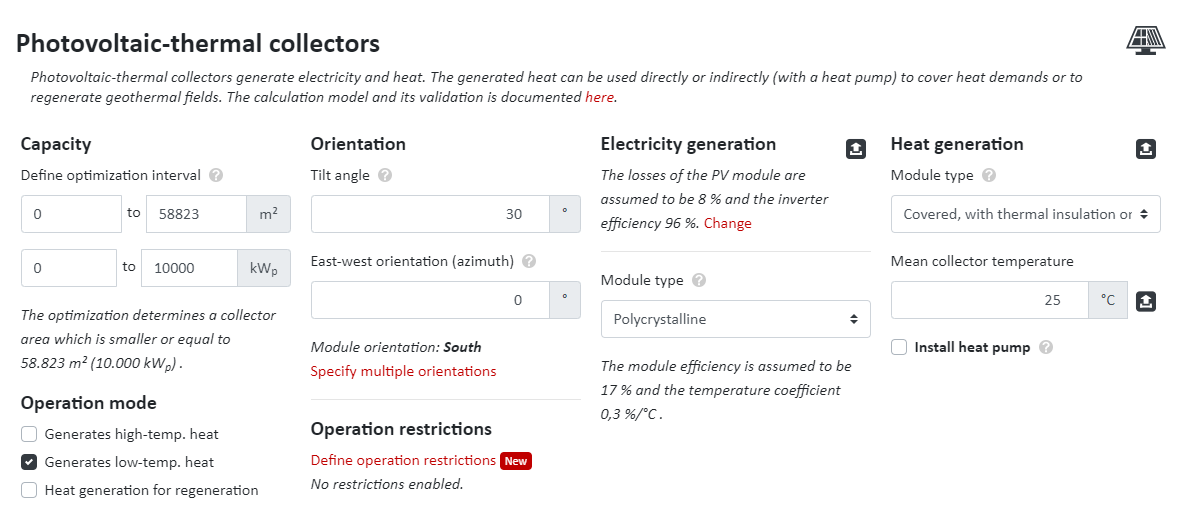
- PVT and solar thermal: Custom collector types can be defined. For this purpose, the ISO 9806 standard has been integrated into the tool.
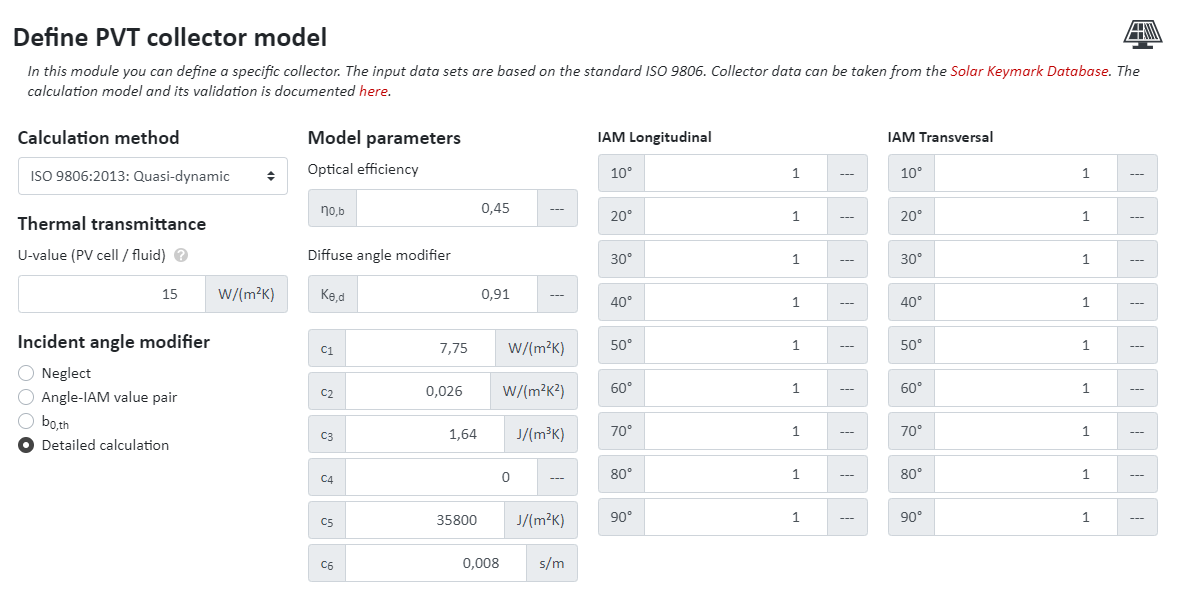
- Multiple orientations can be specified (e.g., east-west orientations for flat roofs)
- Solar thermal: Average collector temperature can be uploaded
- Photovoltaics: Revision of input parameters: Inverter efficiency, system losses and module type (module efficiency and temperature coefficient).
- Photovoltaics: Adjustment of PV capacity in kWp in addition to area specification.
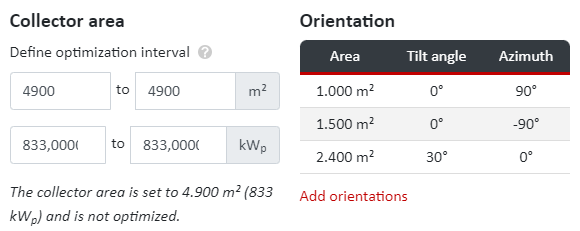
Energy hub: Thermal and electrical storage
- State of charge restrictions, e.g., 20-80 % for batteries
- Definition of charging and discharging speed (%/h or kW)
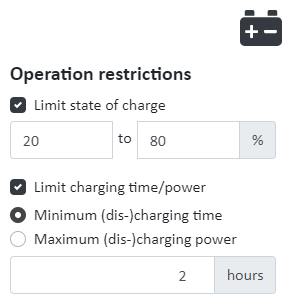
Energy hub: Hydrogen
- Revised model for hydrogen storage (specification of compression energy)
- Base power demand for electrolyzers
- Output for electrolyzers: Water consumption and oxygen release
- Output for fuel cells: Oxygen demand and produced water quantity
- Representation of hydrogen quantities in kW or MWh and kg or t
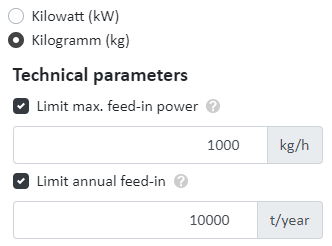
Correction of Errors
- When uploading feed-in tariffs and electricity purchase prices, in certain cases in the previous version, an erroneous error message was displayed stating that the feed-in tariff was greater than the electricity purchase price. Thanks to the student from TU Kaiserslautern for bringing this to our attention!
Outlook
Even in the new tool version, not all user suggestions have been implemented. We are already planning the next software version with many more new features. These include detailed geothermal calculation modules, a report export, and the accurate modeling of heat networks on geographical maps. In addition, our development list includes many small improvements that will be integrated gradually. We are also currently working on providing you with a better documentation. If you have any suggestions, please feel free to share your ideas with us.
Acknowledgments
Parts of the development of the new tool version were supported by the Federal Ministry for Economic Affairs and Climate Action as part of the Plan4Heat project. We sincerely thank them for their support!

This might also interest you
nPro software
Plan your energy system with nPro!


 English
English
 Deutsch
Deutsch


